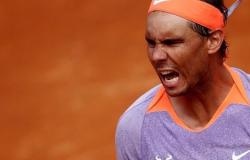
Zero points in the world championship, great corporate responsibilities and the horrors of Rubinho and Ratzenberger’s accidents. Senna was under high stress.
Okay, we find ourselves in Europe again, home to all the F1 teams. Several had new features in their cars after traveling through South America, for the Brazilian GP, and Asia, the Pacific GP, in Japan.
On the Thursday before the San Marino GP, the third stage of the 1994 World Championship, several journalists awaited Senna’s arrival at the Enzo e Dino Ferrari racetrack, in Ímola. Among them, me. It was already after 3 pm, the scheduled time for the press conference, and he never appeared on the track.
I was in a nearby city, Ferrara, for the launch of a bicycle under the Senna brand. It brought together, of course, the most advanced technology available. Senna sought to associate his name only with excellent products.
Suddenly, a small crowd began to move inside the paddock, a characteristic sign of the approach of the event’s protagonists, such as Senna. It was always like that with him. Wherever he was, around the world, his charisma, his way of instilling himself in people’s hearts made him intimate with Brazilians, Japanese, Malaysians, Hondurans and Australians, among others.
Who was Ayrton Senna, the last Brazilian three-time F1 champion?
Millions carried it with them wherever they went. Most of the time Senna got along with it and certainly appreciated it. In others, he avoided the public and this led some fans to be disappointed.
Senna was not always able to isolate himself from the challenges of the competition weekend and speak to the fans without being affected by the pressure that he, mainly, put on himself.
For Senna, it seemed that the real meaning of life was in competition, such was the absolute importance he attached to it. This means that on certain occasions a crowd asking for his autograph did not move him. He was thinking about what to do to be faster. I witnessed scenes of both natures, of attention, affection with the fans and, also, simply ignoring them.
Returning to the Thursday of the Imola race, after speaking with English and Italian-speaking journalists, Senna informed us Brazilians that he would talk to us afterwards. We waited a few minutes and he got into Williams’ motorhome. He chatted briefly with Frank Williams and sat down to eat.
It was at one of the tables in the covered area, next to the team bus. Today’s motorhome millionaires didn’t exist. The teams were limited to their buses and extended tarpaulins, where everything happened under them.
Senna invited us to sit down too and, while enjoying a plate of pasta with white sauce, he chatted with us, without the formal rigors of an interview. There were no more than four or five journalists at our table. He had long hair, a plaid shirt. Among us journalists, we joked that that shirt resembled those of the country duos. The authentic ones.
Senna was always very discreet with his clothes. That day he had deviated a little from his standard.
Always looking distant, as if something was deeply bothering him, he answered questions visibly with his head elsewhere.
– The car should improve here, we are understanding it better, the track is not the most undulating and I will have a little more comfort.
At his request, Adrian Newey and Patrick Head made changes to the cockpit of the FW16 model. Senna banged his hands on the inside walls of the cockpit when he was driving.
Later on we will see that this fact ended up being decisive in the accident that killed him just three days later. According to technical expertise.
The forward portion of the cockpit was unthinkably narrow. The F1 regulations at the time did not impose the same minimum dimensions as today, which are more human. And Newey was, as always, on edge. When turning the steering wheel, Senna bumped the top of his hand against the inner sides of the cockpit. Over the course of almost two hours of racing, this was a problem. His hand ended up injured. He showed us the marks.
Again I spoke to Ivan Capelli, driver of the 1990 Leyton House, also designed by Newey. I told the story in the previous chapters, remember? “To get into the car I had to stand on the seat, place my left foot on the right and only after sitting down move my left foot to its normal position. There was no room to enter with your legs side by side.”
The same principles of reducing the car’s frontal area as much as possible, in order to reduce aerodynamic drag, or air resistance, Newey also applied to Williams’ FW16. All designers do this, true, but without taking things to the limit of unbearable for the pilot, as Newey always opted.
First there was the issue of double abandonment in the first two stages of the World Cup, Interlagos and Aida, in Japan. Against all predictions. And the awareness of a harsh reality: Schumacher and Benetton were very strong opponents and their Williams, FW16, “a disaster”.
No, that’s all. Things off the track also demanded a lot of dedication from Senna, helping to create a picture of extreme apprehension that he experienced. He was investing heavily in some businesses and naturally this worried him.
Shortly before, he had signed a contract with the German car manufacturer Audi to represent the brand in the Brazilian market. It involved millions and millions of dollars and a lot of responsibility. At the same time, he acquired the Ford Frei Caneca dealership in São Paulo. His partner, Bira, was in Imola. There was still a lot to work out about these transactions.
During Senna’s lunch in the Williams motorhome, around four o’clock in the afternoon, Riccardo Patrese arrived, who had left the track at the end of the previous season. The happy, expansive way in which the Italian spoke to Senna, there beside us, contrasted with the Brazilian’s cold, distant posture, despite his effort to express to Patrese his happiness at seeing him.
The climate of tension for Senna grew so much after the serious accident of Rubens Barrichello, from Jordan, the following day, Friday, and the death of Roland Ratzenberger, from Simtek, on Saturday, that the F1 doctor, Doctor Sid Watkins, He even spoke to the driver on Saturday night, advising him not to compete in the San Marino GP.
– He told me, what am I going to claim for the team, in this situation we are in, 20 points behind Schumacher in the standings? Just that I’m not well? – Senna replied to Dr. Watkins, according to what the doctor told us.
I explore the topic in the next chapters.
Doctor Watkins was a remarkable man. A neurosurgeon, he created the FIA Institute after Senna’s death to look after F1 safety, among other interests. And he accomplished a gigantic work. This is the theme of the last chapter. I recommend reading. Dr Watkins died in 2012, aged 84, but left an extraordinary legacy.
Senna was at the Maggiore Hospital, in Bologna, on Friday night, visiting Rubinho, when I arrived there to find out about him, although we had already been informed that he had not suffered anything serious. And I also went to get more news. I needed to write a text. From Bologna to the Autódromo Enzo e Dino Ferrari, in Ímola, it is only about 50 kilometers.
Before the championship started, Senna and Rubinho were together touring Japan, they went to Disney, and they strengthened their relationship.
You will see in the next chapter Dr. Watkins’ apprehension regarding Senna, his already dejected expression when visiting Rubinho in the hospital, and the tears he felt, the next day, upon learning of Ratzenberger’s death. All in all, the pilot was under great stress.
To complicate matters, Senna showed great disagreement with the reprimand received from the sports stewards. The race director, Belgian Roland Bruynseraede, reported Senna’s “indiscipline” when heading to the Villeneuve Curve, the site of Ratzenberger’s accident, shortly before.
There are more elements to put on the scales in favor of Senna’s emotional destabilization, who felt pressure to start reversing the situation in the championship, with his biggest opponent having won the first two stages and him, the clear favorite to be champion, without a point. some in the classification. Let’s talk.
Tags: Senna years Chapter contortions Williams car high doses stress formula
--




